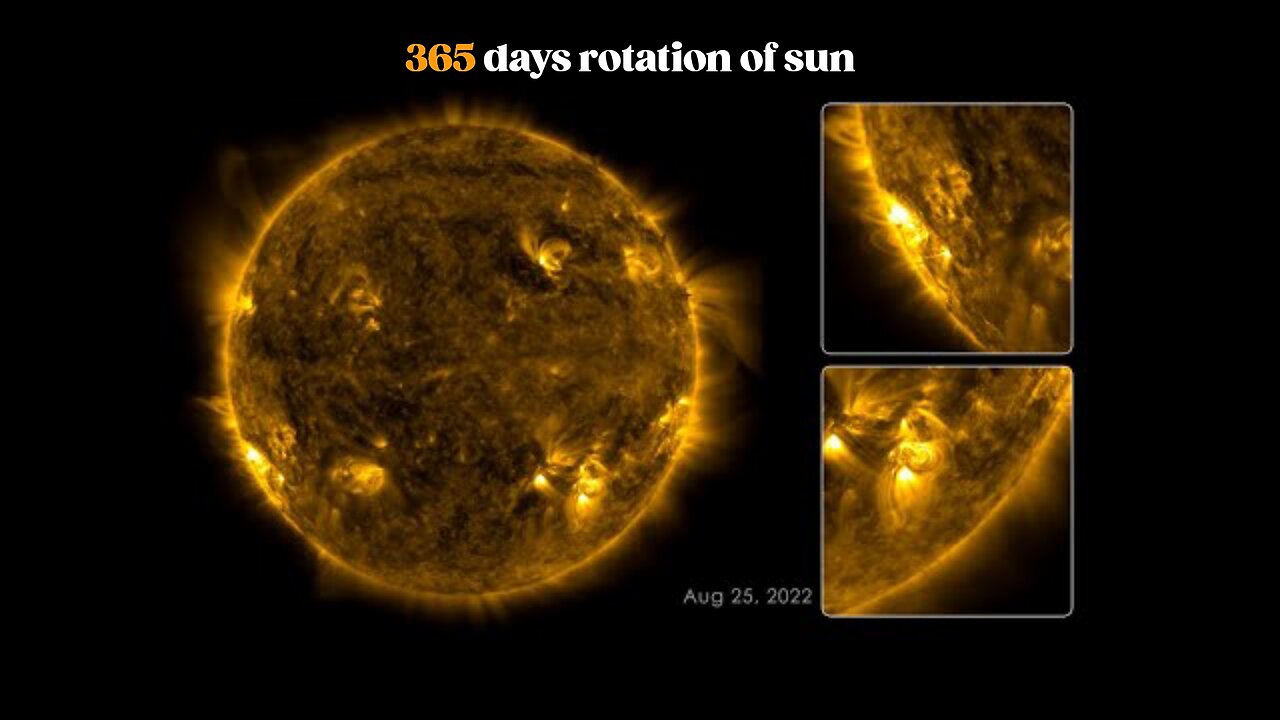Premium Only Content

133 days rotation of sun |
In this video, we see the Sun rotating on its axis over the course of 365 days. The Sun is a giant ball of plasma and gas, and it takes about 25 days to rotate once at its equator. The rotation is not uniform, however, and it takes slightly longer to rotate at the poles.
The video begins with a view of the Sun from above. We can see the Sun's surface rotating slowly, and we can also see the Sun's atmosphere, which is made up of hot plasma. As the video progresses, we get a closer view of the Sun's surface. We can see the solar flares and sunspots that are constantly appearing and disappearing on the Sun's surface.
The video ends with a view of the Sun from the side. We can see the Sun's rotation in three dimensions, and we can also see the Sun's prominences, which are huge loops of plasma that extend out from the Sun's surface.
This video is a fascinating look at the Sun, and it helps us to understand how this giant ball of plasma works. It is also a beautiful video, and it is sure to amaze viewers of all ages.
Here are some additional details that you could include in the description:
The Sun is the star at the center of our solar system. It is a giant ball of hot plasma, and it is about 109 times the diameter of Earth.
The Sun's rotation is responsible for the day-night cycle on Earth. As the Sun rotates, different parts of Earth are exposed to sunlight.
The Sun's rotation also affects the Earth's climate. The Sun's heat is unevenly distributed across the Earth's surface, and this difference in heat causes the Earth's atmosphere to circulate.
The Sun's rotation is also responsible for the solar wind. The solar wind is a stream of charged particles that flows from the Sun. The solar wind can affect Earth's atmosphere and magnetic field.
-
 16:10
16:10
Cowboy Kent Rollins
2 days ago $2.14 earnedSalisbury Steak Recipe | Hungry Man TV Dinner Remake
10.5K7 -
 44:22
44:22
Tactical Advisor
2 hours agoFinished My Dream AR15! | Vault Room LIve Stream 022
18.7K1 -
 LIVE
LIVE
FusedAegisTV
3 hours agoMay The 4th! KOTOR Remaster MOD - The Best Star Wars Game of ALL TIME | Western Retread #4
81 watching -
 LIVE
LIVE
The White House
1 day agoLo-Fi MAGA Video to Relax/Study To 🇺🇸
519 watching -
 LIVE
LIVE
GritsGG
3 hours ago#1 Warzone Win Grind! 🔥
213 watching -
 5:04:28
5:04:28
Grant Cardone
7 hours agoReal Estate Interactive DAY 2
49K4 -
 16:55
16:55
Stephen Gardner
1 day agoBUSTED! Letitia James STOLE $41k in Tax Payer Funds for LUXURY PRIVATE JETS!!
120K270 -
 2:09:16
2:09:16
TheItalianCEO
4 hours agoI LOVE Metal Gear Solid - Metal Gear Solid V
26.6K1 -
 17:41
17:41
DeVory Darkins
2 days ago $102.23 earnedTrump DEFUNDS NPR as Jobs Report drops BAD NEWS for media
81.4K186 -
 50:11
50:11
Squaring The Circle, A Randall Carlson Podcast
1 day ago#046 The Dynamic Planet: Understanding Global Climate Change - Squaring the Circle
41.2K18